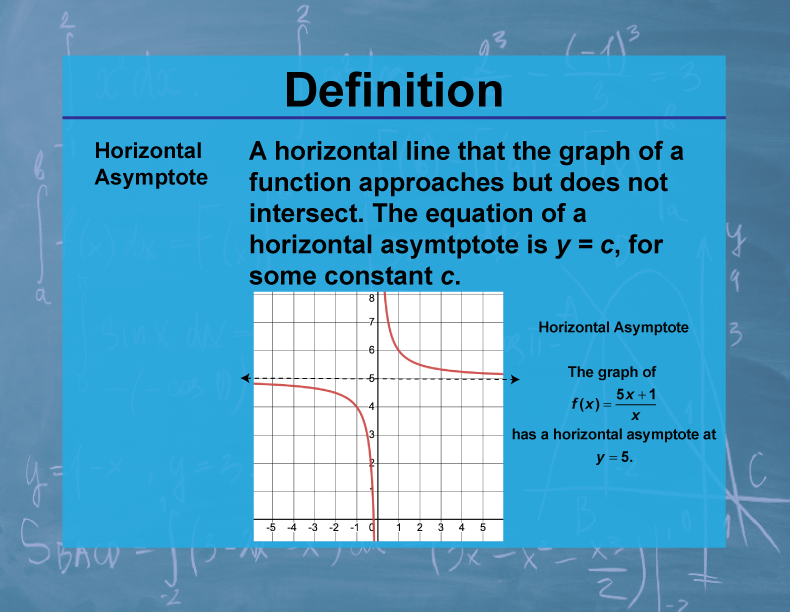
Display Title
Definition--Calculus Topics--Horizontal Asymptote
Display Title
Definition--Calculus Topics--Horizontal Asymptote

Topic
Calculus
Definition
A horizontal asymptote is a horizontal line that the graph of a function approaches as x approaches positive or negative infinity. If y = L is a horizontal asymptote of f(x), then lim[x→±∞] f(x) = L.
Description
Horizontal asymptotes are crucial in understanding the end behavior of functions, particularly rational, exponential, and logarithmic functions. They provide insight into how functions behave as x gets very large or very small, which is essential in many real-world applications such as population growth models, decay processes, and economic forecasting.
In mathematics education, the concept of horizontal asymptotes helps students develop a deeper understanding of limits and function behavior. It bridges algebraic manipulation with graphical interpretation and introduces the idea of functions approaching, but never reaching, certain values. This concept is fundamental in preparing students for more advanced topics in calculus and analysis.
Teacher's Script: "Let's consider a population growth model: P(t) = (1000t)/(10+t), where P is the population and t is time in years. What happens as t gets very large? We can find this by calculating the limit as t approaches infinity. The result gives us the horizontal asymptote, which represents the maximum population this model predicts. How can we use this information in real-world scenarios? How might it help in urban planning or resource management?"
For a complete collection of terms related to Calculus click on this link: Calculus Vocabulary Collection.
| Common Core Standards | CCSS.MATH.CONTENT.HSF.IF.C.7, CCSS.MATH.CONTENT.HSF.BF.A.1.C |
|---|---|
| Grade Range | 11 - 12 |
| Curriculum Nodes |
Algebra • Advanced Topics in Algebra • Calculus Vocabulary |
| Copyright Year | 2023 |
| Keywords | calculus concepts, limits, derivatives, integrals, composite functions |